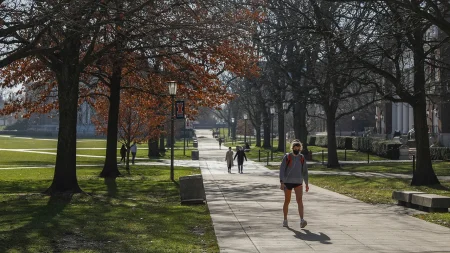Mexico’s Deadly Deluge: Unprecedented Rainfall Leaves Trail of Destruction
Torrential Downpours Devastate Communities as Death Toll Rises
In a catastrophic turn of weather events that has shaken the nation, Mexico is reeling from the aftermath of last week’s torrential rains that swept through multiple states with devastating force. The relentless downpours triggered flash floods, mudslides, and widespread infrastructure collapse, leaving communities in mourning as the death toll continues to climb. Emergency response teams have been working around the clock in what officials are describing as one of the most severe weather disasters in recent memory.
The hardest-hit regions include coastal communities and mountainous areas where vulnerable infrastructure proved no match for the sheer volume of water. Eyewitnesses describe scenes of chaos as rivers burst their banks within minutes, giving residents little time to evacuate to higher ground. “It was like the sky opened up completely,” recounted Miguel Ortega, a 67-year-old resident from a small community outside Acapulco. “We’ve seen hurricanes before, but this was different—the water just kept coming and coming until everything was submerged.” Local meteorological services reported that some areas received the equivalent of six months of rainfall in just 72 hours, overwhelming drainage systems and natural waterways that normally channel runoff away from populated areas.
The human toll of this disaster continues to mount as rescue workers sift through debris and reach previously isolated communities. Official figures currently place the number of fatalities at dozens, though authorities acknowledge this number may rise as communication is restored to cut-off areas. Beyond the immediate loss of life, the economic impact threatens to be equally devastating, with thousands left homeless and livelihoods destroyed. Agricultural regions are reporting complete crop failures, fishing communities have lost their boats and equipment, and tourism—a vital economic pillar for many of the affected coastal regions—has ground to a halt as visitors cancel reservations and locals focus on immediate survival needs rather than hospitality services.
President Sheinbaum Faces Citizen Anger During Inspection Tours
President Claudia Sheinbaum, just months into her historic tenure as Mexico’s first woman president, finds herself navigating not only a natural disaster but also the political challenges that inevitably accompany such crises. In recent days, the president has conducted a series of high-profile visits to disaster zones, meeting with affected residents and coordinating with local officials to accelerate relief efforts. These visits, intended to demonstrate hands-on leadership during a national emergency, have occasionally yielded tense encounters with disaster victims frustrated by what they perceive as an inadequate government response.
During a particularly charged moment in a small Guerrero community, where floodwaters had destroyed nearly 80% of homes, Sheinbaum was confronted by residents who had been without clean water or electricity for five days. “Where were you when the waters came?” shouted one woman whose family business had been completely destroyed. “We need action, not more promises!” The president, maintaining composure amid the criticism, assured residents that federal resources were being deployed and that her administration would implement both immediate relief and long-term reconstruction plans. Political analysts note that Sheinbaum’s response to this disaster represents a critical early test of her leadership, with potential ramifications for her administration’s credibility and public support through the remainder of her term.
Behind the scenes, government officials describe a coordinated federal response that includes the deployment of military units for search and rescue operations, emergency funding allocations for temporary housing, and expedited distribution of food and medical supplies. However, logistical challenges remain substantial, with many affected areas accessible only by helicopter due to damaged roads and bridges. The president has pledged transparency in relief fund distribution—a sensitive issue in a country where past disaster responses have been marred by allegations of corruption and mismanagement. “Every peso allocated for disaster relief will reach those who need it,” Sheinbaum declared during a national address from a rain-damaged school building that now serves as a temporary shelter. “This administration stands with the victims, and we will rebuild stronger than before.”
Climate Change Implications Loom Large in Disaster’s Aftermath
Environmental experts and climate scientists have been quick to place these catastrophic rains within the broader context of climate change, noting that such extreme precipitation events are becoming increasingly common globally. Dr. Elena Vázquez, a climatologist at the National Autonomous University of Mexico, explained that warming ocean temperatures intensify evaporation rates, leading to more moisture-laden weather systems capable of delivering unprecedented rainfall volumes. “What we’re witnessing is not simply bad weather—it’s the manifestation of climate patterns that have been fundamentally altered by human activity,” she stated in a recent interview.
This scientific perspective has added another dimension to the political discourse surrounding the disaster, with environmental advocates calling for more robust climate adaptation strategies alongside immediate relief efforts. Mexico, with its extensive coastlines and varied topography, remains particularly vulnerable to climate-related disasters, including both extreme rainfall events and prolonged droughts. Infrastructure experts point out that many of the communities most severely impacted by the recent rains were built in flood-prone areas without adequate drainage systems or protective barriers—a problem exacerbated by rapid urbanization and informal settlement patterns.
The economic repercussions extend far beyond the immediate cleanup and reconstruction costs. Insurance analysts estimate damages in the billions of pesos, with many affected residents lacking coverage for flood-related losses. Agricultural economists project significant price increases for staple crops in the coming months as damaged farmland recovers. Tourism officials, meanwhile, are scrambling to reassure potential visitors that many destination areas remain safe and accessible, fearing the economic fallout of canceled vacations during the upcoming high season. “We need to communicate accurately about which areas are affected and which remain perfectly safe for visitors,” explained Carlos Mendoza, head of a regional tourism board. “Otherwise, we risk compounding the physical disaster with an economic one that could take years to overcome.”
Communities Demonstrate Resilience Amid Ongoing Crisis
Despite the overwhelming challenges, affected communities have demonstrated remarkable solidarity and resilience in response to the disaster. Volunteer brigades have formed spontaneously in many areas, with neighbors helping neighbors clear mud from homes, salvage possessions, and distribute essential supplies. In one particularly moving example from Michoacán state, residents formed a human chain across a swollen stream to evacuate elderly community members trapped by rising waters. Social media platforms have become crucial communication tools, with hashtags like #AyudaMéxico and #SOSMexicoLluvias facilitating coordination between those needing assistance and potential donors or volunteers.
Religious institutions and civil society organizations have transformed their facilities into improvised shelters, with priests, pastors, and community leaders working alongside government officials to coordinate relief efforts. “In times like these, we see both the terrible power of nature and the inspiring strength of human compassion,” remarked Father Joaquín Montero, whose parish church now houses over 200 displaced people. “The waters may have taken much from us, but they cannot take our dignity or our determination to rebuild.” Business owners, too, have stepped forward, with local restaurants preparing meals for evacuees and construction companies donating equipment and personnel for clearing operations.
International assistance has also begun to arrive, with neighboring countries sending specialized rescue teams and humanitarian supplies. The United Nations has launched an appeal for emergency funding, while various international NGOs are mobilizing resources to support long-term recovery efforts. President Sheinbaum has welcomed this external support while emphasizing that Mexico maintains primary responsibility for protecting and rebuilding its communities. As the immediate emergency response transitions into recovery and reconstruction phases, attention is turning to how these devastated regions can rebuild in ways that enhance resilience against future climate disasters. “We must learn from this tragedy,” reflected Governor Marina Hernández of one heavily affected state. “The homes and infrastructure we rebuild must be designed not just to restore what was lost, but to withstand the challenges we know our changing climate will continue to bring.”
As Mexico continues to grapple with this ongoing crisis, the true test lies not only in the immediate response but in the long-term commitment to supporting affected communities through the arduous process of rebuilding their homes, livelihoods, and sense of security. For now, as search operations continue and rain-swollen rivers slowly recede, the nation remains united in grief for those lost and in determination to emerge stronger from this devastating chapter in its history.










